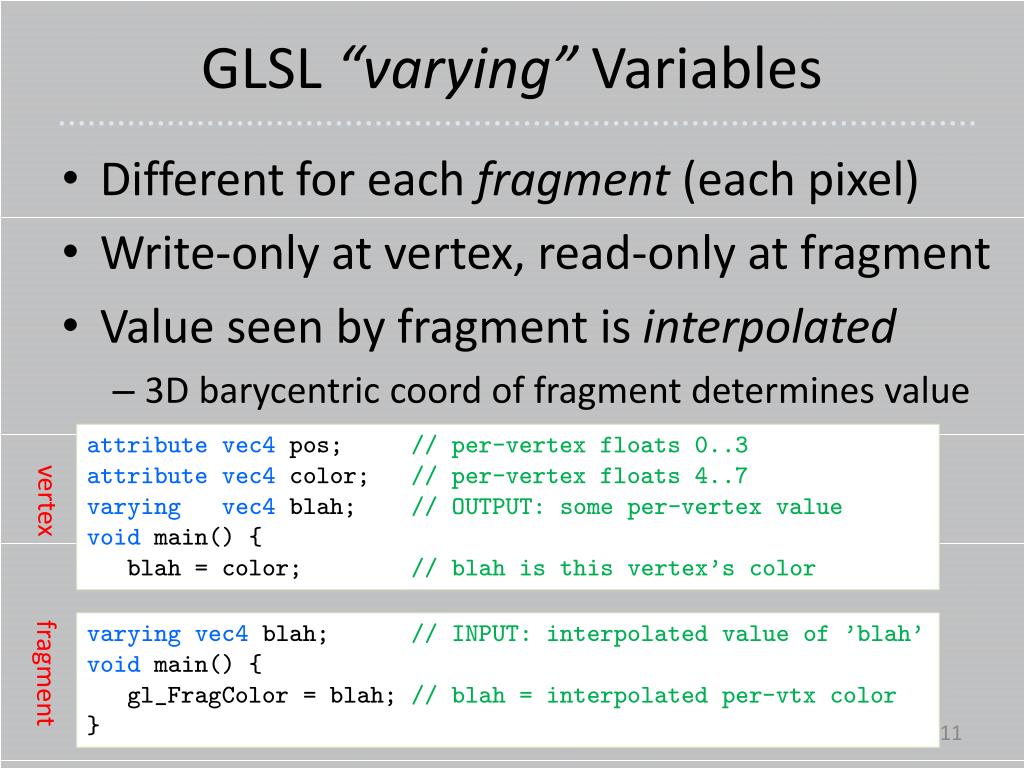

There is no other matrices that you need to multiply by.

I am passing in the matrices as glUniformMatrix4fv(location, 1, GL_FALSE, mvpMatrix)

Vec4 color = texture2D(t_texture0, v_texcoord0) Gl_Position = mvp_matrix * (obj_matrix * vec4(a_vertex, 1.0)) įrag shader: uniform sampler2D t_texture0 Putting my shaders in RenderMonkey works when I have ES 2.0 mode enabled, but on standard desktop GL it's just a black screen (no compiler errors/warnings): Normally I get a black screen, but if I set the Z value of all my vertices to 0 I get stuff to show up. Problem is, it seems like for anything other than 2D, creating a shader passing in the modelviewprojection matrix as a uniform does not work. I'm porting a codebase of mine from fixed-function OpenGL 1.x to OpenGL 2.x - Technically OpenGL ES 2.0, but I'm still coding on the desktop, just keeping in mind the limitations that ES 2.0 imposes which are similar to the 3.1 'new' profile.


 0 kommentar(er)
0 kommentar(er)
